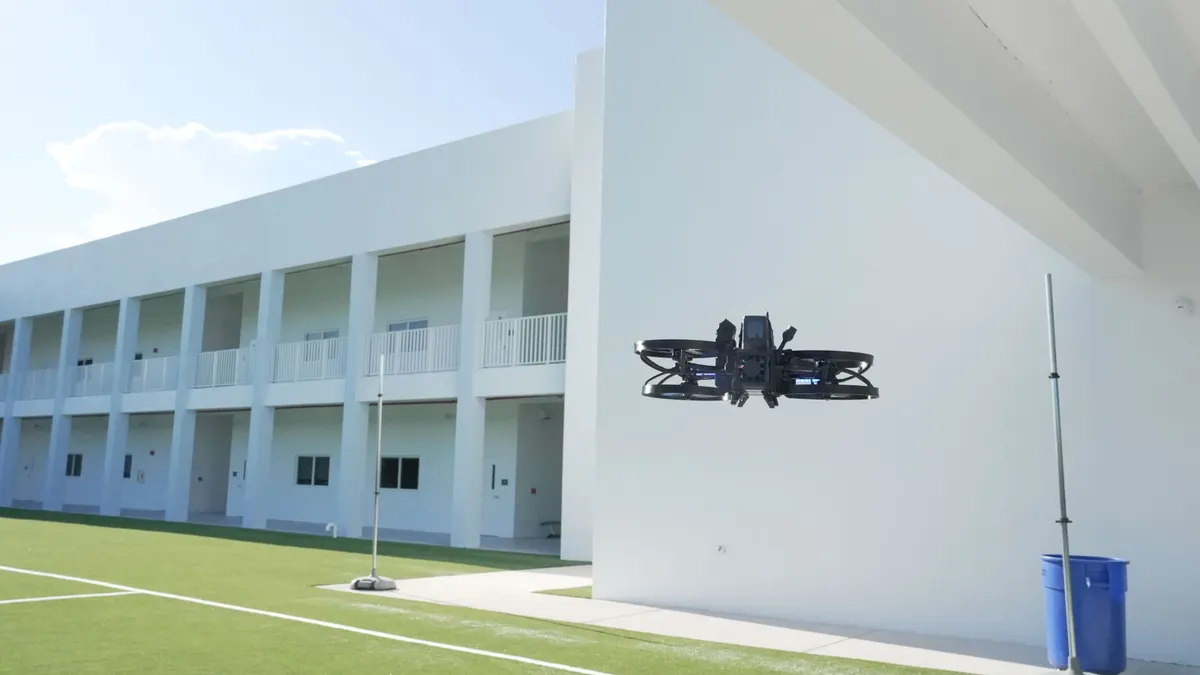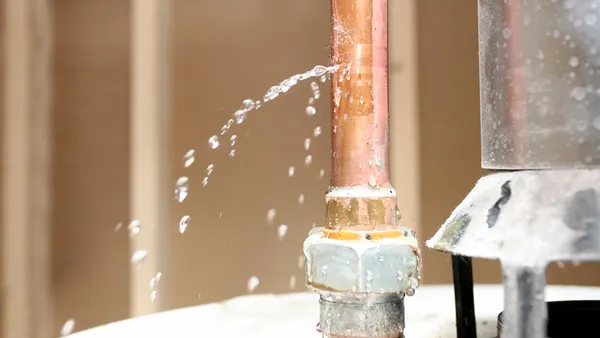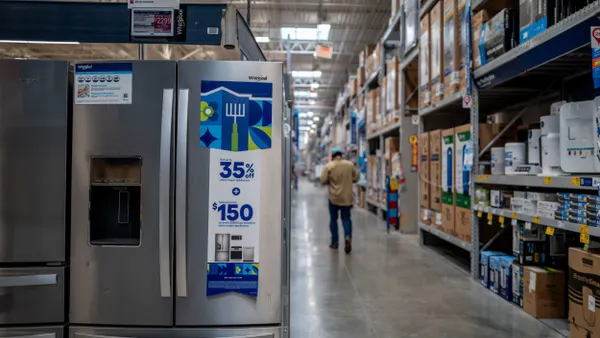Dive Brief:
- National Football League stadiums could face up to $11 billion in cumulative climate losses by 2050 in a high emissions, or “business as usual” scenario, according to a new study by climate data and analytics firm Climate X.
- The report, released Wednesday, evaluated the vulnerability of the NFL’s 30 stadiums across the U.S. based on both their exposure to 10 natural hazards and the anticipated annual losses based on the projected replacement costs at the venues’ current value.
- The study found that while stadiums with the highest exposure to “severe” hazards are “concentrated in southern, low elevation cities” — like New Orleans, Louisiana; Tampa Bay, Florida; and Houston, Texas — stadiums with the highest potential to see their values degrade between now and 2050 are located in the states of New Jersey, California and Arizona.
Dive Insight:
Climate X utilized a Representative Concentration Pathway 8.5 emissions model, which represents a “very high [greenhouse gas] emissions” scenario, according to the Intergovernmental Panel on Climate Change’s 2014 assessment report. The RCP8.5 model is one of multiple potential scenarios used to model the effects of climate change and was designed to represent a worst case scenario, though a 2020 study found the scenario tracked closely to historical cumulative emissions at the time.
The stadiums were evaluated under the RCP8.5 model based on their exposure to climate risks, such as surface flooding, tropical cyclones, storm surge, wildfire and drought, as well as cumulative losses and percent change in losses between 2020 and 2050.
The climate research firm said that, beyond the impact on their usability as sports venues, the climate risks could disrupt economic hubs, increase insurance premiums and impose “significant” repair costs on the local communities they operate in. The group said that future climate adaptation measures by the stadiums are unknown — meaning the report’s findings could have overestimated expected losses — but Climate X CEO Lukky Ahmed said it should serve as a “wake-up call for the NFL, stadium owners and local governments.”
“The stadiums most at risk are looking at significant financial and operational challenges,” Ahmed said in a release. “At the same time, some stadiums show resilience, proving that strategic adaptation can make a difference.”
The data showed that losses due to natural hazards across all 30 venues will increase by $117 million by midcentury, with total losses from such hazards projected to reach $1.5 billion in 2050. Three stadiums are expected to account for 30% of the total losses that year: MetLife Stadium in East Rutherford, New Jersey; SoFi Stadium in Inglewood, California; and State Farm Stadium in Glendale, Arizona.
MetLife Stadium — which hosts the NFL’s New York Giants and New York Jets, as well as other sporting events — is expected to see cumulative losses of $5.65 billion, largely due to projected coastal flooding and storm surge, according to the report. This is the only venue where cumulative losses would outpace the cost to replace the asset — $3.07 billion — with losses accounting for 184% of the replacement value and a projected 9.8% increase in loss due to natural hazards over the 30-year time horizon.
Losses due to hazards are expected to increase 8.7% at SoFi Stadium in California — home to the NFL’s Los Angeles Chargers and Los Angeles Rams — with an estimated $15.9 million in additional losses in 2050 compared to 2020. The $5.5 billion venue — which is 100% privately funded — is expected to incur $4.38 billion in losses due to factors like coastal flooding and wildfires. By 2050, the stadium would cost $6.34 billion to replace.
Wildfires also pose a risk for damage for State Farm Stadium — home to the NFL’s Arizona Cardinals — and is projected to be the cause of over $563 million in cumulative losses between 2020 and 2050. Wildfires and coastal flooding — the latter projected to account for over $377 million in damages — collectively represent over 97% of the more than $965 million in losses the stadium is projected to incur.
On the other end of the spectrum: the report found that Lambeau Field in Green Bay, Wisconsin, Gillette Stadium in Foxborough, Massachusetts and Lumen Stadium in Seattle, Washington — respective homes to the Green Bay Packers, New England Patriots, and Seattle Seahawks — are projected to have relatively low damage costs.
The climate risks go beyond potentially posing disruptions to local economic hubs and sending big bills to NFL stadium owners. Local governments have increasingly tied incentives to stadium projects in recent years, meaning the climate costs could be passed along to taxpayers as well.
The three new stadiums built between 2020 and 2023 carried a collective price tag of $1.97 billion, with taxpayers picking up $750 million of that, according to the Journal of Policy Analysis and Management. Even for the privately funded SoFi Stadium, stadium developers are expected to receive up to $100 million in tax reimbursements after 100% of taxes are paid for five years, according to the National Conference of State Legislatures.











